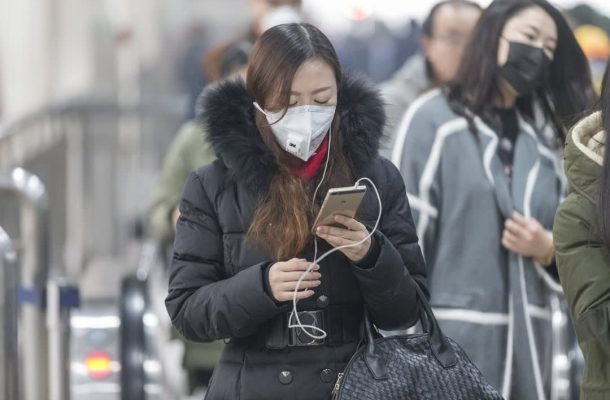What do we know about this new coronavirus?
There are still many unknowns, but new information is emerging every day. The initial cluster of the virus was linked to the Wuhan South China Seafood City, where various live animals are sold, but the exact animal source is yet to be determined. The genetic ‘fingerprint’ of the virus has been identified, enabling development of diagnostic tests that can be used to confirm infection.
Infected patients have presented with ‘viral pneumonia’, characterised by fever and range of symptoms including shortness of breath, cough, fatigue, chest discomfort, sore throat and headache. In addition to the cases linked to the market, human-to-human transmission has been confirmed, occurring in the context of close personal contact.
The exact mechanism of transmission is not known. At the time of writing, all confirmed cases have either been in Wuhan, China, or had close contact with another laboratory-confirmed case. A small number of cases have been detected outside of China, including Thailand, the Republic of Korea, Japan, and the United States.
What happened with SARS-CoV and MERS-CoV?
SARS-CoV was first identified in Guangdong Province of China in 2002, with the subsequent epidemic involving more than 8000 cases in 26 countries. Approximately 10 per cent of infected patients died.
MERS-CoV was first identified in Saudi Arabia in 2012, with 2494 confirmed cases subsequently reported in 27 countries. Most human-to-human transmission occurred in healthcare facilities, and dromedary camels were considered an important reservoir. Approximately 35 per cent of infected patients died.
How was this virus detected?
In 2004, following SARS-CoV, the Chinese Center for Disease Control established a National Pneumonia Surveillance system for the early detection of novel respiratory pathogens such as novel coronaviruses and avian influenza.
The system requires all healthcare providers in China to report cases of pneumonia without clear cause that don’t respond to conventional treatment. This system detected a cluster of cases of pneumonia in Wuhan, subsequently identified as being caused by 2019-nCoV.
Is this new coronavirus similar to SARS-CoV and MERS-CoV?
All three emerged as novel coronaviruses, and therefore not surprisingly have some similarities. All are considered to have initially been transmitted to humans from animals, and all cause respiratory illnesses.
However, we don’t yet know enough about 2019-nCoV to confidently compare it to these previous novel coronaviruses in some important ways, such as the degree of ‘transmissibility’ between humans (known to epidemiologists as R0, or the average number of secondary cases generated by each infected patient), and the severity of the illness caused (that is, the case fatality rate).
Another important parameter is the degree to which those with infection transmit before they have symptoms of infection. These characteristics determine to what extent 2019-nCoV is a major public health threat. Despite more than 600 cases in at least seven countries, the World Health Organization has determined that the outbreak is not yet a global health emergency.
How accurate are the reports of numbers of people infected?
It’s difficult to be sure, but substantial efforts are being invested to detect cases. China is conducting surveillance and contact tracing activities. This means that each time a patient is confirmed, their contacts and the healthcare workers involved in their care are monitored for symptom onset and tested for infection if needed.
However, Chinese authorities and the international public health community are still learning about this virus. For example, it’s conceivable that some infected patients have either no symptoms or minimal symptoms, and are therefore not tested. If this is the case, then the virus could be circulating undetected, particularly in China.
The absence of effective vaccines and therapeutic agents highlights the importance of efforts to prevent the spread of this virus.
In addition, given the time required to trace contacts and perform confirmatory testing, we need to keep in mind that these estimates are not a ‘real-time’ tally of the number of infected patients. Finally, a modelling study from Imperial College London estimated that there had been 4000 cases in Wuhan City, based on the number of cases detected in other countries.
Are vaccines or treatment available?
There are currently no effective vaccines available for use to prevent coronavirus infection. Similarly, there are no effective agents available to treat coronavirus infection. There are some investigational therapies, but these are associated with toxicities without clear benefit.
The absence of effective vaccines and therapeutic agents highlights the importance of efforts to prevent the spread of this virus. Infection prevention is the key strategy to reduce the impact of this virus.
What is being done to prepare and respond in Australia?
A lot of work is currently being undertaken to respond to this potential public health threat in Australia. Often this involves adaptation of existing plans for response to novel respiratory viruses that have been developed for this type of scenario. For example, at national level, passengers arriving at Sydney airport on direct flights from Wuhan are being screened for possible infection.
Public health authorities in each state and territory are providing guidance to the healthcare system, including a coordinated approach to case detection and infection prevention strategies.
Public health reference laboratories around Australia have established mechanisms to test for 2019-nCoV in samples from any patients suspected of having the infection. The effectiveness of border controls is doubtful given that the incubation period of this virus may be up to 14 days.
Additionally, as the northern hemisphere influenza season is in full swing, most people detected with fever aren’t likely to have coronavirus infection.
What should travellers do?

Individuals planning travel to China and other potentially affected countries should consult Smartraveller, which has specific advice regarding 2019-nCoV and recommendations for individual countries. At the time of writing, Australians were being advised to reconsider their need to travel to Wuhan.
Moreover, transportation to and from Wuhan has been closed by Chinese authorities. The United States Centers for Disease Control and Prevention also provides updated advice for travellers about 2019-nCoV.
For travellers to regions that may be affected:
Simple hygiene measures such as regular hand washing or use of alcohol-based hand rub are important.
Travellers should avoid contact with sick people and farms, live animal markets, animals, and animal droppings.
Travellers should obtain information about routine travel precautions for other infectious diseases, including influenza vaccination.
Travellers to affected areas should present for medical attention if they develop fever and respiratory symptoms within 14 days of return. It’s important to notify healthcare workers of their travel history.
Where can we find up-to-date information?
The World Health Organization has a website dedicated to coronaviruses, with resources and links to regularly updated information about 2019-nCoV: www.who.int/health-topics/coronavirus.
The Australian government Department of Health is providing updates here: www.health.gov.au/health-topics/novel-coronavirus.
Recommendations for travellers can be found here: www.smartraveller.gov.au/news-and-updates/novel-coronavirus-outbreak.
This article was written by Andrew Stewardson, a Senior Research Fellow in Infectious Diseases and Allen Cheng, a Professor of Infectious Diseases Epidemiology, at Monash University. It was published by Lens.













